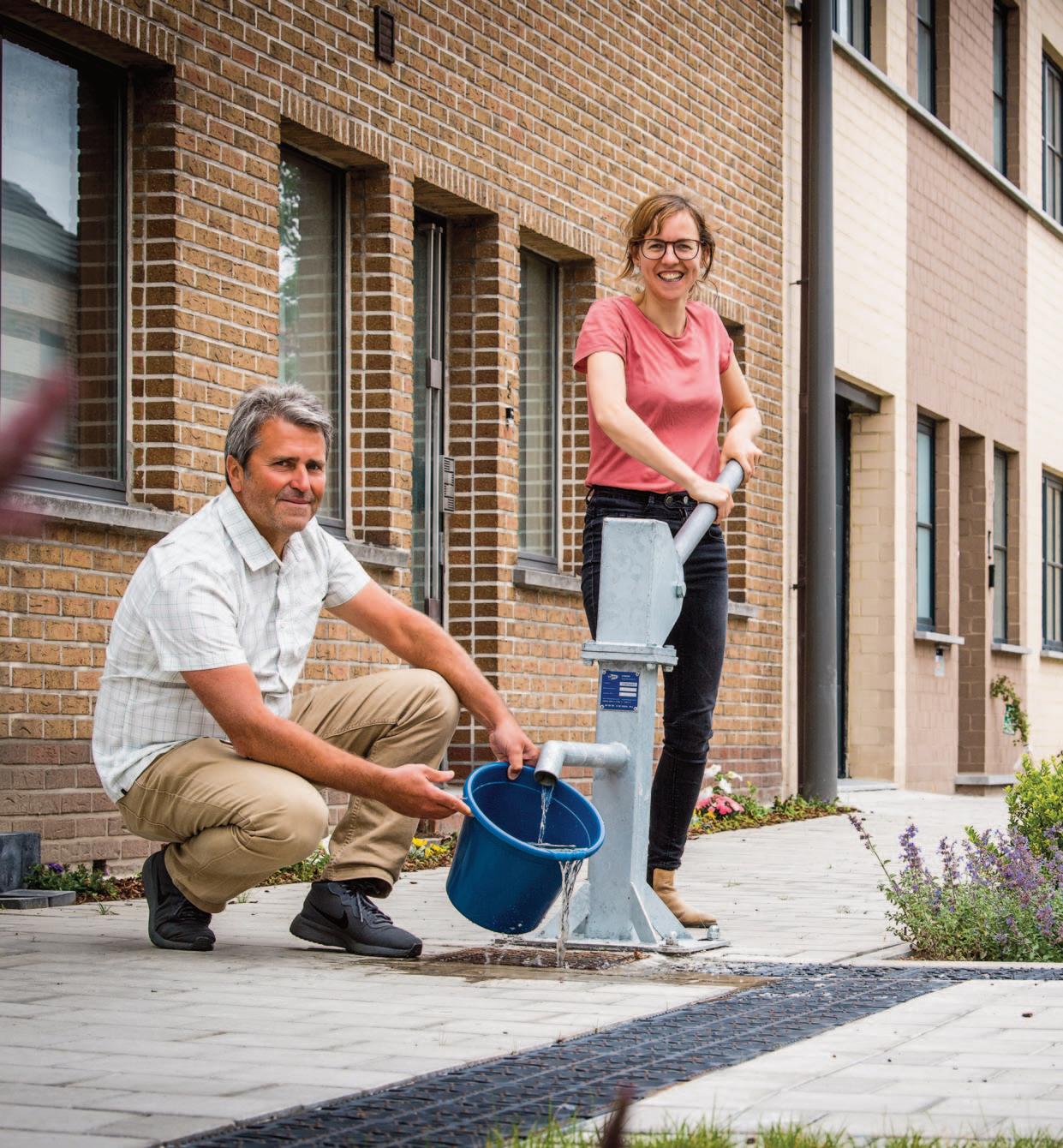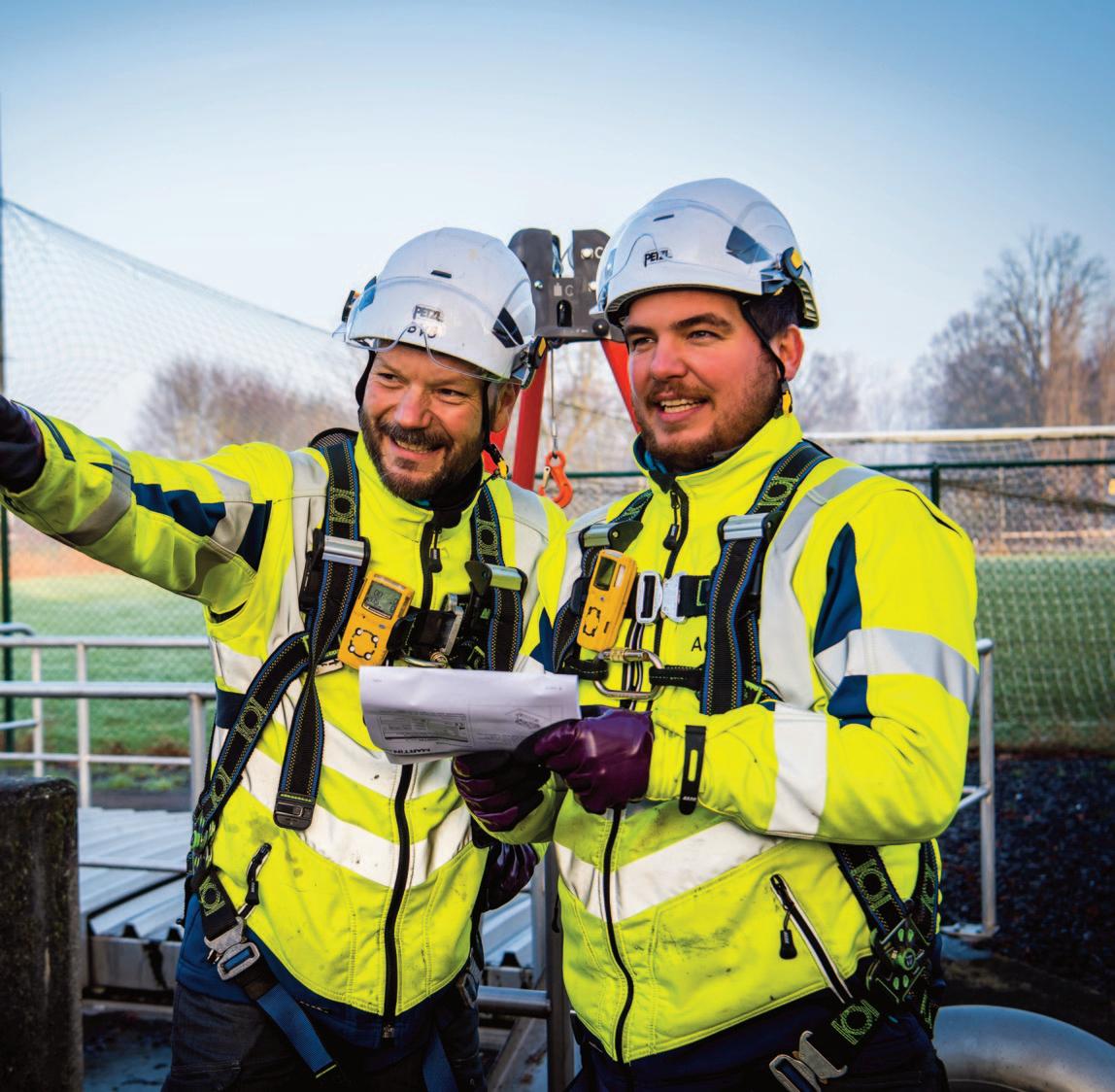
3 minute read
General information
from Annual report 2022
by Aquafin
History
Aquafin was established by the Flemish Region in 1990 in order to implement the EU Urban Waste Water Directive. Since the treatment of waste water in Belgium is a regional matter, Aquafin is responsible for the development, management and funding of the regional sewage treatment infrastructure. The company was established under the Law of 26 March 1971 on the protection of surface waters against pollution (Wet op de bescherming van de oppervlaktewateren tegen verontreiniging), which was converted into the Decree on Integrated Water Policy of 18 July 2003, coordinated on 15 June 2018
Besides the contract for Flanders, Aquafin also operates as sewer manager for municipalities and the company is working on various methods for valorising residual products from waste water and is always looking for innovative applications to offer both within and outside the company. Aquafin applies the principles of separate accounting in order to separate commercial activities from activities commissioned within the regional (supra-municipal) remit.
Supervision
As the regulator, the Flemish Environment Agency (VMM) supervises the activities that Aquafin carries out for the Flemish Region. In addition, Aquafin is a private joint stock company with an autonomous Board of Directors, audit committee, auditor, etc.

Finance And Invoicing
Since 1 January 2023, Aquafin itself has been responsible for selecting supra-municipal investment projects which it puts on the agenda in order to achieve the objectives set. Before projects on supra-municipal budgets are carried out, the Flemish Environment Agency assesses the supra-municipal character of the project. After delivery by the contractor, the Flemish Environment Agency can carry out random checks on projects for up to two quarters thereafter. After that, the costs incurred are finally approved and Aquafin has a contractual right to their repayment, spread over a maximum period of 30 years. On the other hand, Aquafin also draws up an asset management programme for the existing plants, based on LCP analyses (lifecycle plans). In the coming years, the proportion of replacement investments (asset management) will rise, so that the proportion repaid over 15 years will gradually increase.
The water companies are obliged by decree to treat the water they supply. They enter into an agreement for this with Aquafin, which assumes the task of treatment for them. Aquafin invoices the water companies for the investment costs over the specified term, along with the company’s operating costs. The water companies pay part of Aquafin’s invoices via a grant from the MINA fund, funded by general tax revenue. They pass on the remainder, currently around 70% of the total bill, to drinking water consumers according to the principle of “the polluter pays”.
In this formula, the budget for operating costs, excluding financing costs, under the Management Agreement is related to factors including the pollution load treated, the assets managed, the flows handled and the investment budgets. A series of fixed packages are added to this. The budget calculated is a total operating budget for Aquafin, based on what is known as the performance budget formula. This gives Aquafin the freedom to focus on the areas it considers important and to allocate the performance budget internally according to these areas. A cumulative annual efficiency gain is assigned to several packages from the performance budget each year.
The Flemish Region is a co-debtor in the invoice flow between Aquafin and the water companies. The turnover invoiced is spread between the various Flemish water companies, based on an allocation formula annually updated by Aquaflanders and approved by the Flemish Environment Agency. As Aquafin’s investment expenditure is repaid spread over a period of time, the company has to raise financing for this. Long-term financing for a project is not possible until it has been delivered internally and is in the invoice stream to the water companies. These long-term investments therefore involve no construction risk for the financiers. Aquafin covers short-term funding during the projects’ construction phase with equity capital, commercial paper, lines of credit and general corporate purpose financing.
Management Agreement And Allocation Agreement
Aquafin’s tasks are set out in a Management Agreement entered into between the company and the Flemish Region. This is a 20-year rolling agreement which specifies that, besides developing, managing and operating the treatment infrastructure, Aquafin is also responsible for financing this. The latest update to the agreement was made on 1 January 2023.
An allocation agreement exists between the Flemish Region, Aquafin, the European Investment Bank and Belfius Bank, with Belfius Bank acting as agent. The agreement stipulates that, should Aquafin find itself in financial difficulties, the water companies will no longer have to pay Aquafin for the treatment of the drinking water supplied by them, but Belfius Bank. As the agent for the allocation agreement, Belfius Bank will then pass on the sums to the financiers on the (interim) maturity dates of the financing agreements. According to the allocation agreement, the outstanding credit balance Aquafin has with the water companies must always be greater than the debt under the allocation agreement (the allocation ratio). The statutory auditor checks this ratio after each disbursement of financing under the agreement and confirms this to Belfius Bank. In turn, this bank communicates this allocation ratio to the financiers. It is also important for them to know that, according to the allocation agreement, any changes to the Management Agreement with a financial impact must first be submitted to them for approval.
In order to participate in the allocation agreement, the financier first signs an agency agreement with Aquafin and Belfius Bank.








